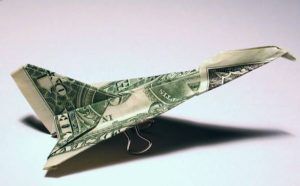 The pricing of the airline ticket is often determined simultaneously by the demand and supply. The mismatch of demand-supply within this industry regularly results in sub-optimal incomes for the aviation sector as well as the consumer’s satisfactory utilities. Pricing of airline tickets is in a steady condition of instability. We often experience its dynamic nature which impacts the demand and supply within the airline industry left us excited. However, the airline globally may begin to taste the policy which would customize the pricing of airfare and the itinerary outcomes grounded on the person searching (Ran Wang, 2016 pg. 71). Thus, these modified airfares would be impacted by the place one life, how regularly one flies, the type of travel, as well as other individual information.
The pricing of the airline ticket is often determined simultaneously by the demand and supply. The mismatch of demand-supply within this industry regularly results in sub-optimal incomes for the aviation sector as well as the consumer’s satisfactory utilities. Pricing of airline tickets is in a steady condition of instability. We often experience its dynamic nature which impacts the demand and supply within the airline industry left us excited. However, the airline globally may begin to taste the policy which would customize the pricing of airfare and the itinerary outcomes grounded on the person searching (Ran Wang, 2016 pg. 71). Thus, these modified airfares would be impacted by the place one life, how regularly one flies, the type of travel, as well as other individual information.
Price Elasticity of Demand
The leisure travelers, necessarily customers, seek to maximize the satisfaction or utility derived from the trip and the related utilization of the holiday experiences, subject to a particular budget or income constraint. The demand of leisure travel characteristics are the determinants of the travel expenses, the relative cost of other commodities, socioeconomic, and income characteristics (Kouhpaei, 2011pg. 365). The business voyagers, who utilize business as a contribution to the ultimate production, are interested in general in reducing expenses for a particular output level (He, 2012 pg. 1). The demand for business travel is influenced by such factors as the output standards of the firm, travel expenses, and the relative cost of the current factors of production input and the output level of the company. As a result, business and leisure particular socioeconomic factors manipulating the demand must, therefore, be separately modeled.
Figure 1
The demand curve shifts from D to D’ (Figure 1) due to the decrease in flight tickets.
Price Elasticity of Supply
The recent market contains a larger area in the demand and supply within the airline industry. In an economic recession with the cost of oil increasing rapidly, the current consumers have a larger area in the demand and supply in the aviation sector (He, 2012 pg. 2). In an economic recession with the cost of oil increasing rapidly, and the airline ticket’s expense is also rising, and the demand of leisure travel is falling.
Figure 2
Anything which alters the costs of production will shift the supply curve (He, 2012 pg. 2). Thus, the supply curve for the flight up as well as to the left side (from S to S’ in Fig. 2)
However, from the findings above, it is clear that there were inelastic demand and supply. These findings showed that there would be a loss of revenue if the costs were decreased, and hence could support the argument for maintaining the existing structure of fare, which contains the net impact of restricting the price competition within the industry.
Also Study:
Contemporary Issues affecting Aviation Industry
Heathrow Airport Business Analysis Report
References;
- He, S. (2012). An Analysis of Airline Industry. Norwich Economic Papers , 1-4.
- Ran Wang, W. Y. (2016). Estimation of Demand and Supply in US Airline Indus. International Journal of Liberal Arts and Social Sc , 71-79.
- BHASKAR, R. (2014). Data Analysis for Dynamic Pricing in Airline: The Role of Tactical Pricing. Journal of Cases on Information Technology (JCIT). 16, 14-22.